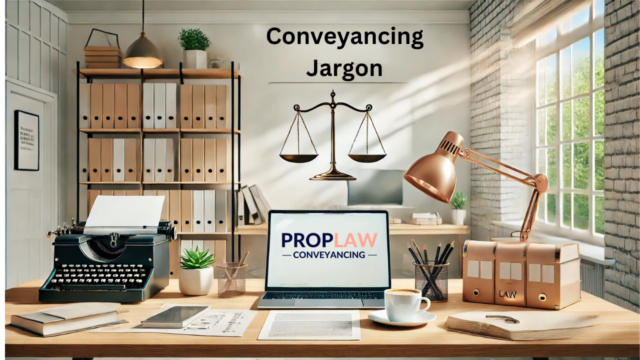
Navigating Conveyancing Jargon: Key Terms for Property Buyers and Sellers
Conveyancing can be full of unfamiliar legal terms, making it challenging for property buyers and sellers to navigate. At PropLaw Conveyancing, we aim to simplify this process, ensuring you feel confident and informed every step of the way. Here’s a handy guide to some of the most common conveyancing terms to help you understand the journey from contract to settlement.
Essential Conveyancing Terms to Know
1. Certificate of Title
A Certificate of Title is an official document that records the property owner’s name and any registered interests, such as mortgages or covenants. Held at the land registry, this certificate provides proof of ownership but may not show recent encumbrances registered in real-time. For a current record, a Register Search Statement is needed, listing the latest information on ownership, encumbrances, caveats, and notices.
If you have an original Certificate of Title, keep it secure, as replacements can be costly if lost. With the shift toward digital conveyancing, traditional Certificates of Title are being phased out in favor of electronic records.
2. Contract of Sale
The Contract of Sale is a binding document outlining the terms for the transfer of property from seller (vendor) to buyer (purchaser). It specifies key details, including:
- Purchase price
- Settlement date
- Property details (especially for new builds like off-the-plan units)
- Special conditions, if applicable
The Vendor’s Statement (Section 32) is also part of this contract, disclosing essential information about the property.
3. Cooling-Off Period
The cooling-off period provides purchasers with a three-day window to withdraw from the contract after signing, though certain exceptions apply. Should a buyer decide to back out within this period, they may face a fee of 0.2% of the purchase price or $100, whichever is higher. Note that contracts signed at or around auctions do not offer a cooling-off period.
4. Easement
An easement grants a third-party the right to use part of a property for a specific purpose, such as drainage or sewerage. Easements can restrict property usage; for example, construction over a sewer easement may be prohibited. It’s vital to be aware of any easements, as they can impact how you use or develop your property.
5. Encumbrance
An encumbrance is a third-party claim on the property, often restricting its use or burdening it with financial obligations. Common encumbrances include mortgages, leases, covenants, easements, and caveats. At settlement, the conveyancer will ensure that the seller’s mortgage is discharged, preventing the buyer from taking on any existing debt.
6. Making an Offer
Making an offer involves signing a Contract of Sale, which becomes binding if the vendor countersigns. Offers can include special conditions, such as clauses for:
- Financing approval
- Building and pest inspections
- Property valuation
These terms help secure the buyer’s interests but may also affect the vendor’s decision to accept the offer.
7. Register Search Statement
A Register Search Statement provides a comprehensive record of property ownership and registered interests at the land registry. In Victoria, properties are governed by the Torrens system, which offers a reliable and up-to-date Register Search Statement for verifying ownership and encumbrances.
8. Strata Title and Owners Corporation
Strata title applies to properties with shared ownership structures, like apartments, townhouses, or units, and automatically makes buyers members of an owners corporation. Common areas, including lobbies, pools, or driveways, fall under the corporation’s care, with fees paid by individual owners to cover maintenance. A professional manager typically oversees the property on behalf of all owners.
9. Vendor’s Statement (Section 32)
The Vendor’s Statement, also known as a Section 32, is legally required under the Sale of Land Act 1962. This statement provides critical property details, ensuring buyers are fully informed before signing the contract. It includes:
- Vendor’s right to sell
- Building permits issued within the last 7 years
- Information on any mortgages, covenants, easements, or restrictions
- Property planning information (zones, overlays)
- Disclosure of outgoings, such as municipal rates
- Notices or orders affecting the property
- Accessibility, bushfire-prone area status, and more
Failure by the vendor to provide an accurate Section 32 can lead to contract rescission if discovered before settlement. However, not all errors result in cancellation, so legal advice is recommended if issues arise.


